Are you having a way too small percentage of sales, downloads, calls… Compared to the number of visitors?
Your website has everything it should have – a nice-looking logo, lengthy description of your services, huge CALL US, DOWNLOAD, SCHEDULE buttons…
And yet, crickets.
Why don’t they do what I want them to do?!
This is a million-dollar question. Maybe it’s a design. Or a bad user experience.
Whatever the case, if you’re not seeing results, maybe you should consider doing something marketers call CRO, or conversion rate optimization.
In this article, we’ll teach you the basics of CRO, show you the benefits of it, and give you a set of practical tips you could apply today to move the needle.
What is the Conversion Rate and How to Calculate it?
Let’s start with the basics. A conversion happens when our visitor completes a desired action.
For example, if we wish that they pick up the phone and call us as soon as they scroll through our homepage, and that was our goal, then they “converted”, a conversion happened.
The same applies to downloads, calls… Pretty much any other goal you set.
Conversion rate is the percentage of people who visit our website and do what we want them to do.
Here’s a simple formula to calculate your conversion rate:
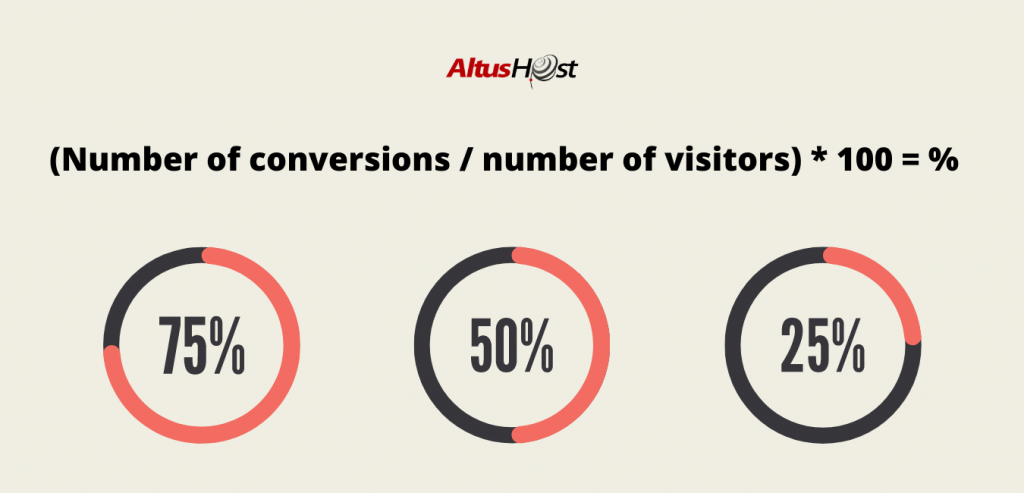
Let’s say 10 people bought our product today, out of 100 of them who visited our website.
Let’s put that into the formula: (10 / 100) * 100 = 10%
Our conversion rate is 10%. Every tenth visitor out of a hundred decides to buy, download, call…
What is a Good Conversion Rate?
The only real answer is – it depends!
It depends on your:
- Conversion goals
- Measures you’ve taken to increase conversion
- Advertising efforts
- Touchpoints where the conversion takes place
But let’s say that most businesspeople agree that 2-5% is a decent number. Everything above 10% is huge and puts you at the very top of successful businesses.
Everything below 2% is considered bad and if you’re in that situation, consider hiring a CRO professional or implementing some tips from this article to fix the leaks.
How Websites Benefit from Conversion Rate Optimization (CRO)
If a website has a high conversion rate, that means that it’s:
- Well designed
- Aligned with visitors’ needs and habits
- Optimized in terms of speed and usability
- Well-written and has a good offer
- Structured to push people to convert
Highly-optimized websites in terms of conversion rate bring more leads, more revenue, and increase your growth rate, as well as your brand image.
There are many ways to optimize your conversion rate. We’ve selected 11 quick ways that you could implement by yourself today and perhaps see an increase in numbers very soon.
Make sure to follow your analytics.
Add Live Chat to Your Website
When people visit your website, they expect to find information fast. Although we like to believe that everyone will read our blog and spend hours looking for that specific info… The truth is, the majority leaves in a minute.
Adding a live chat to your website can increase your conversion rate by a whopping 40%, according to the Apex Chat Study.
Why is that? It’s because people have the chance to contact you right away and get the desired answers. Chances are, they’ll schedule that demo or buy a product just because you were there when they were ready to buy.
Here’s a quick list of live chats to check out:
There are plenty of other options on the market, both free and paid.
Optimize your CTA Buttons
Here’s an image, so you could get a feel of just how small of an improvement can lift your conversion rate.
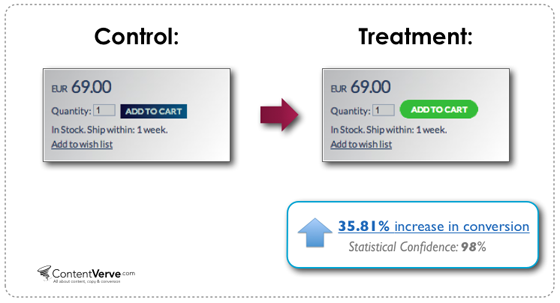
All they did was they changed the button size and color. This study by Befree.io shows that blue might be the best CTA button color.
Here’s an example of good vs dry CTA button text copy.
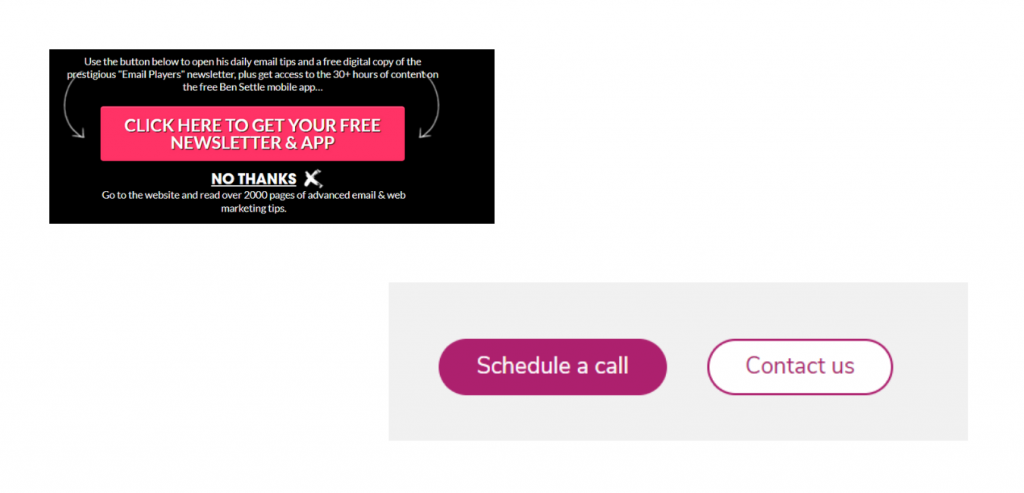
We know it’s easy to just put Schedule a call or Download out there… But don’t you think that Click here to get + Certainty + Specific benefit is a bit more alluring?
The best thing you could do is to test everything.
- Change the button text
- Move it up, down, left, right
- Make it bigger or smaller
And when writing CTA button copy, bear in mind that specificity + benefits always win. Try to provide your visitors with an answer to the question:
What’s next? What can I expect when I click here?
Pro tip: Make sure to point out what they are missing if they don’t click and follow through. Loss aversion is a powerful motivator.
Add a Countdown Timer
Have you heard of the urgency effect? It predicts that people will complete an unimportant task over an important one just because the unimportant one has an expiration date.
Depending on your business type, adding a countdown timer to certain offers, like
- 7 days left to download this e-book
- Price valid until midnight
- 25% off for the next 4 hours
Could squeeze more sales out of your website.
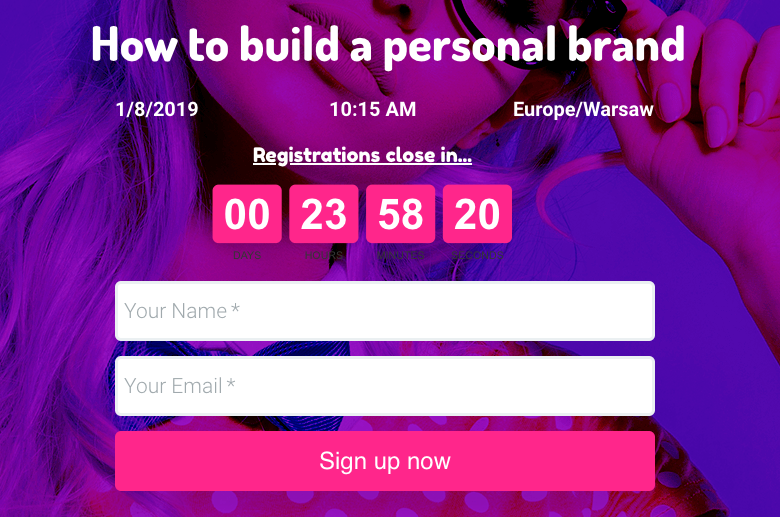
Studies show that timers can increase sales from 5% to 15%.
Pro tip: Use timers carefully. It takes a lifetime to build a brand and only one unfair promotion to ruin it. Don’t put timers to make an illusion of scarcity, and don’t do it all the time.
Use them to push sales when there’s really a deadline. If caught red-handed, you could lose your reputation. That’s something your competition certainly hopes for.
Be fair to customers.
Optimize your Headlines
Headlines can make or break your website. Since 70% of people read only headlines and you have 2.7 seconds to grab someone’s attention, it’s important to write headlines that entice people to read the next sentence.
Of course, we’re not talking about using spammy, clickbaity titles we all hate.
There are proven formulas (check out this guide from Sumo) that bring value without insulting your readers.
The most popular are:
- How to + Desired outcome + Without (something negative)
E.g. How to get more readers to click on your article without using clickbait
- X ways to do this to get that while avoiding something
11 ways to find high-quality leads and avoid unnecessary meetings
Here’s a wonderful example from MarketingExamples.com
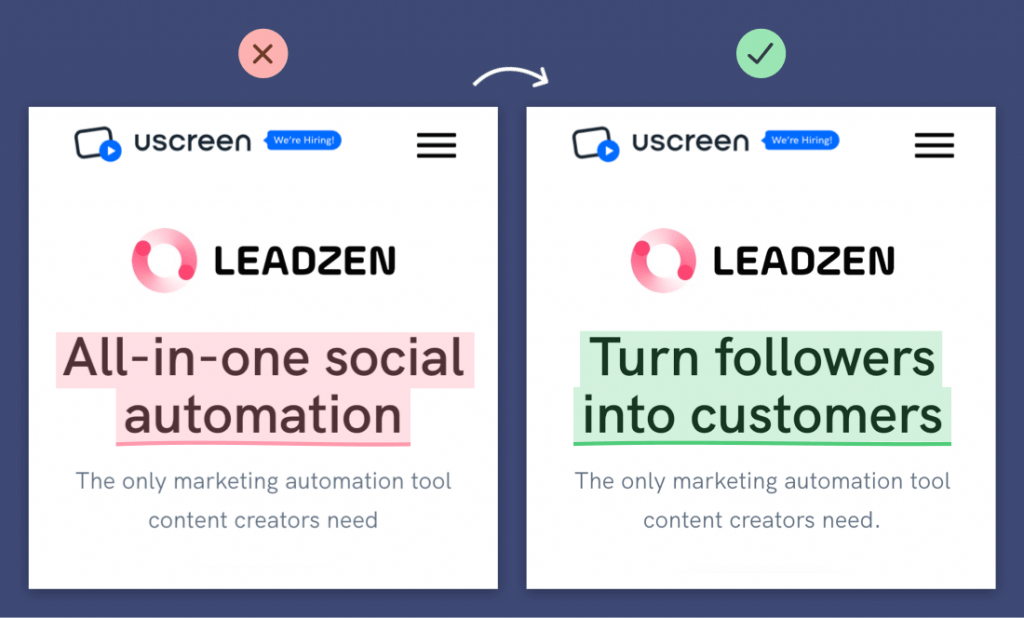
Add Quick, Non-Intrusive 1-2-Question Surveys
Small surveys don’t improve your conversion rate directly, but if done properly, they can propel your website growth immensely. Why is that?
It’s because you get to pick your visitors’ brains. 🧠 With surveys, you get:
- Direct insights into their needs
- An opportunity to add (or remove) elements people want
- Lots of valuable info for your website content
- A pulse on the market
Use insights to improve the experience and you’ll see the sales needle moving in the right direction.
Questions to ask:
- Have you found a solution you were looking for?
- What’s your next step after solving your problem with us?
- How would you rate our information quality?
- Is there something we weren’t providing you with, and yet you find it crucial?

Pro tip: Don’t be afraid to offer incentives in exchange. People lend you their time, find a way to say thanks.
Optimize the Number of Input Fields in your Forms
The old rule of thumb is – fewer input fields – more conversions. But as this case study from VentureHarbour and the case study from CXL show, it’s certainly not that simple.
- The new rule of thumb is – if you’re asking for a huge amount of data, make sure to provide tons of value, like industry reports, webinars, huge and knowledge-packed ebooks…
People expect to give a lot of data if they perceive the value they get in return as high enough.
- However, if you’re inviting people to join your email list or schedule a demo (first point of contact)… Reducing the number of input fields will reduce this friction.
Let’s take a look at Hubspot’s kit download form. They’re giving you a whole set of materials that could save you hours and hours. It’s fair to ask for more data than usual.

Now take a look at this example:
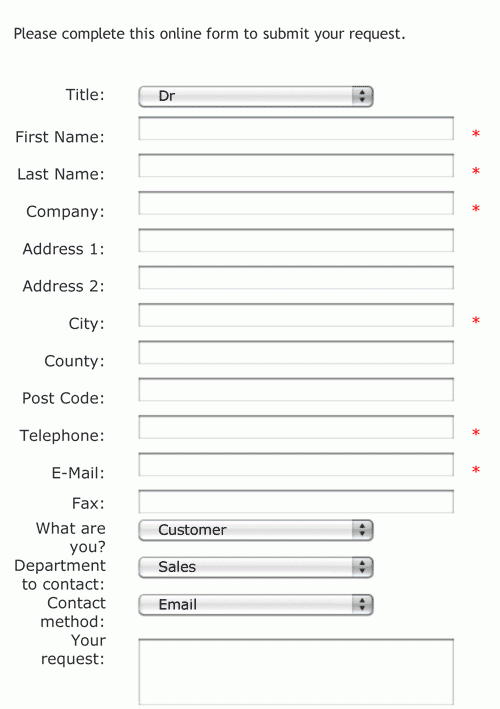
Would you insert all of that data?
Use Heatmaps to Follow Users’ Behavior
Heatmaps are graphical representations of user behavior on your website.
You install a tracker code from the heatmap software that allows you to see
- Recordings of users sessions,
- What they click the most (where they keep their cursors)
- What elements capture the most attention

These types of data help you determine whether the content on your website keeps users engaged. Combined with Google Analytics, you could use this info to make data-driven decisions.
The most popular heatmap software on the market in 2021:
Turn your Blog Posts Into a Multimedia Experience
People have different habits when it comes to consuming content on the internet. Some like to listen, others to watch, while some prefer to read. But they all have something in common – they enjoy rich experiences.
Blog posts rich with multimedia are:
- Visually appealing (blogs with visuals get 94% more views)
- More interesting to read
- Better for SEO (since they increase viewing time)
More traffic, more visitors, and a pleasant experience, in the end, increase your conversion rate.

Types of popular media forms you could add to your blog posts:
- Podcasts
- Videos
- Infographics
- Slideshows
- Images
Insert Social Proof – Testimonials, Logos, Reviews

83% of people say that recommendations influence their buying behavior. This is nothing strange, because:
- When you’re looking for a movie, you check IMDB
- Restaurant? Yelp.
- Software? Capterra.
You get the point. Adding social proof to your website in the form of
- Logos of companies you’ve worked with,
- Testimonials of happy clients
- Reviews from Google or other places
Will certainly help you establish trust with your visitors, and increase conversions.
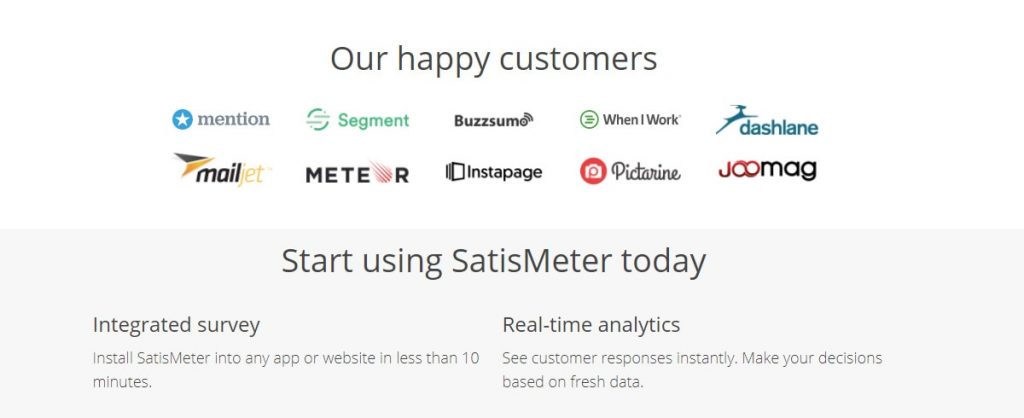
Use Photos of Real People
Adding photos of real people instead of using stock images can increase conversion rates from 18.9% to 140%.
Why? Real faces establish trust. Landing on an unknown website, rummaging through lots of info, without seeing anything more than stock imagery (or stock text!) can’t tell much.
Especially because it’s so easy to get scammed online today.
Our piece of advice: Hire a photographer and add photos of real people to your website.

These two guys might be on every third startup website on the web.
Add Pop-Ups
Yes, people hate pop-ups. They’re distracting, interrupting, and frustrating.
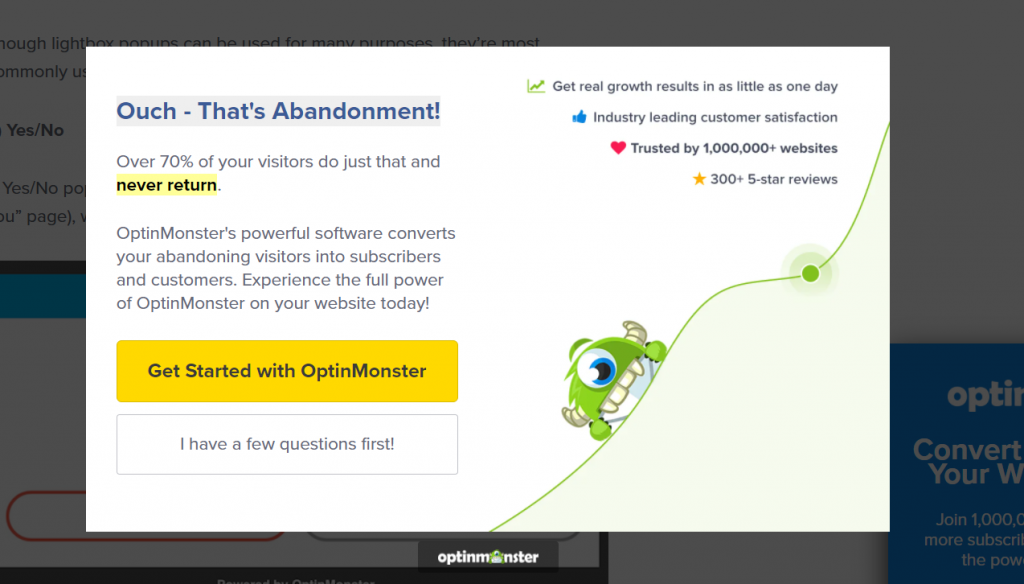
(If you’re curious to find out more about them, check this ultimate list of pop-ups at OptinMonster)
But people actually hate a certain type of pop-ups – those that interrupt them when reading your blog, for example.
We could say that there are 2 types of pop-ups:
- Intrusive (those that cover your whole screen or appear at the exit or middle of text)
- Non-intrusive (slide-in pop-ups, small pop-ups at one part of the screen)…
The non-intrusive ones are cute and more acceptable.
For example, Hubspot saw a 192% increase in clicks and 27% more submissions when they implemented a non-intrusive slide-in pop-up in comparison to a regular CTA button.
When implementing pop-ups, bear in mind that they should not interfere with user experience on the website.
Wrapping Up your First Steps in CRO
Working on your website is like owning a house with a nice lawn… Yes, it’s great, but there’s always some work to do. There’s always room for improvement.
As you have seen, one button can increase or kill your sales. A wrong choice of color can hamper your growth. Too many input fields in your form when providing little to no value is a big no-no.
What you can do right away is to check your Google analytics, connect a heatmap software, do a quick survey with your existing customers, and start making changes by following tips from this article.
Do-rinse-repeat. Check the status after a month or two. It’s a win-win situation. Not doing anything will cost you more than trying.
We hope this article helped you understand the basics of website conversion rate optimization. We’d appreciate sharing it with your friends and family on social media, especially with those whose sites need optimization.

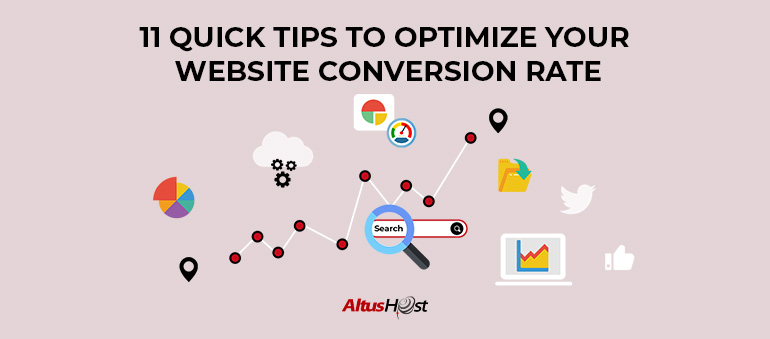
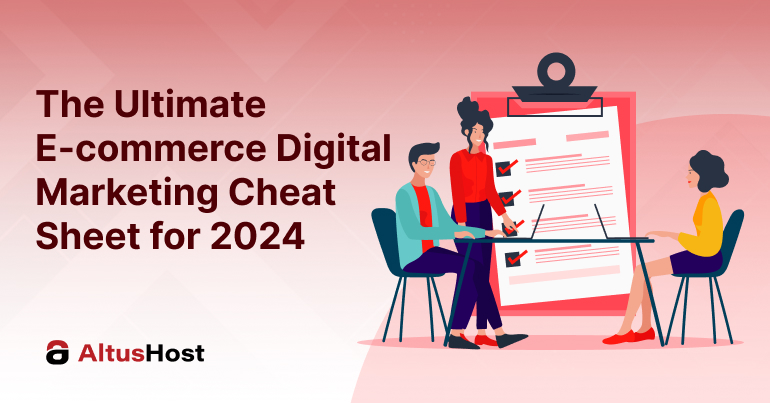
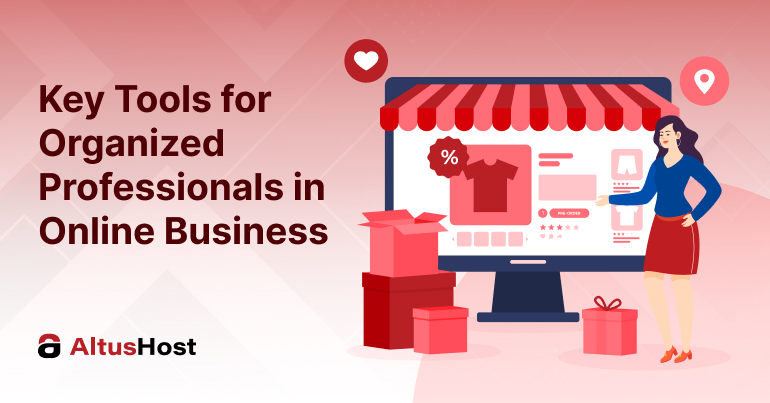
One thought on “11 Quick Tips to Optimize your Website Conversion Rate Today [CRO for Starters]”